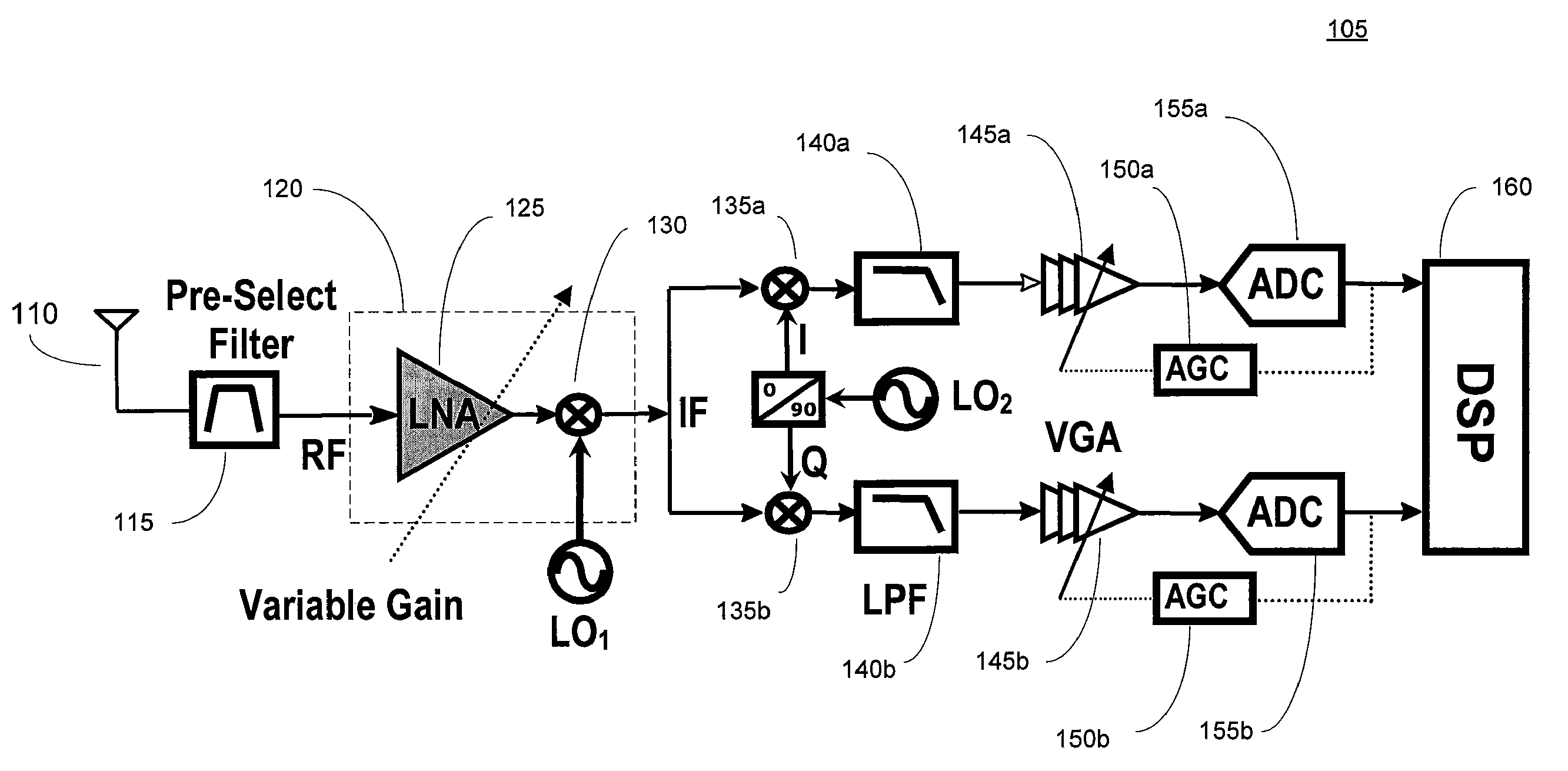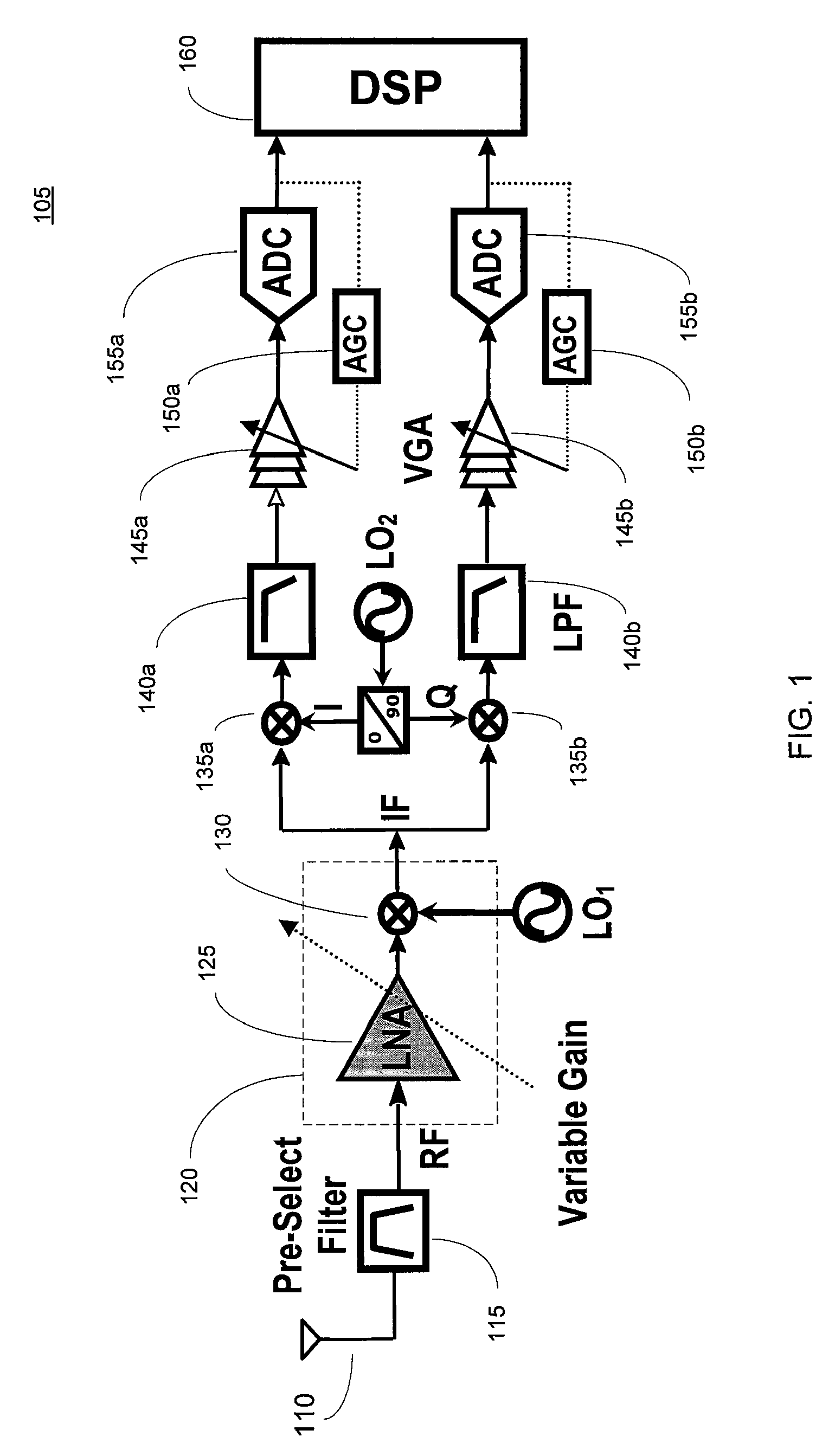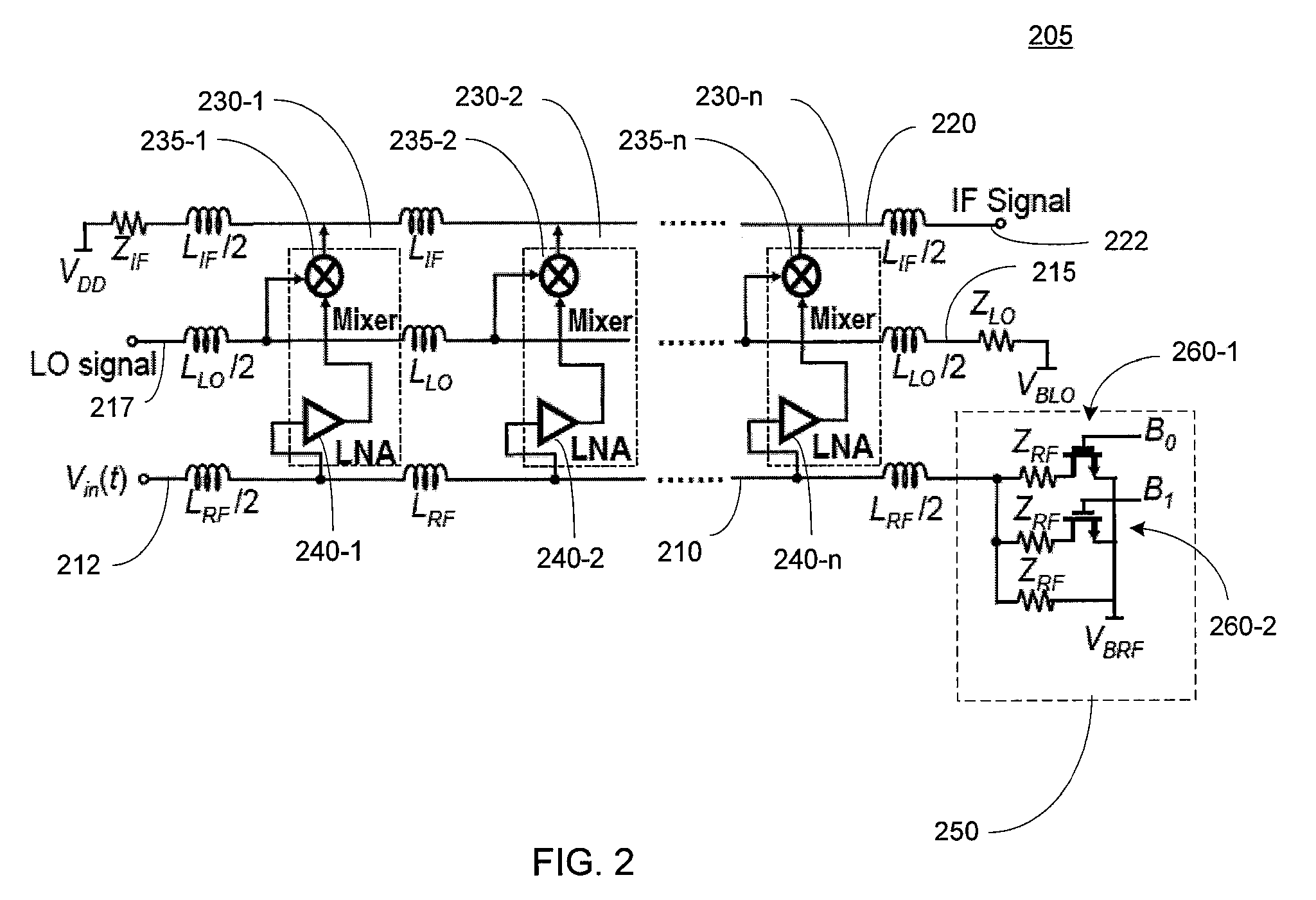Distributed RF front-end for UWB receivers
a technology of distributed radio frequency and receiver, which is applied in the field of ultra wideband (uwb) receivers, can solve the problems of reducing the power consumption of distributed architecture circuits, affecting the performance of uwb receivers, and occupying large chip areas, so as to reduce power consumption and chip area of rf front-end.
- Summary
- Abstract
- Description
- Claims
- Application Information
AI Technical Summary
Benefits of technology
Problems solved by technology
Method used
Image
Examples
Embodiment Construction
[0023]FIG. 1 shows a block diagram of an exemplary UWB zero / low IF dual-conversion receiver 105. The receiver 105 includes an antenna 110 that receives an RF signal, and a pre-select filter 115 that rejects the out-of-band interferences in the received RF signal. The receiver 105 further includes an RF front-end section 120 comprising a low-noise amplifier (LNA) 125 and a mixer 130. The LNA 125 amplifies the RF signal, and the mixer 130 mixes the amplified RF signal with a local oscillator LO1 signal to down convert the signal to an intermediate frequency (IF) signal. In an exemplary embodiment, the IF signal has a frequency of less than 2 GHz. The in-band image frequency in the IF signal will be filtered out using a Weaver-type image-reject architecture in the second down conversion stage in companion with the digital section. The out-of-band image frequencies are also rejected by the pre-select filter 115.
[0024]The second down conversion stage has in-phase (I) and quadrature (Q) b...
PUM
 Login to View More
Login to View More Abstract
Description
Claims
Application Information
 Login to View More
Login to View More - R&D
- Intellectual Property
- Life Sciences
- Materials
- Tech Scout
- Unparalleled Data Quality
- Higher Quality Content
- 60% Fewer Hallucinations
Browse by: Latest US Patents, China's latest patents, Technical Efficacy Thesaurus, Application Domain, Technology Topic, Popular Technical Reports.
© 2025 PatSnap. All rights reserved.Legal|Privacy policy|Modern Slavery Act Transparency Statement|Sitemap|About US| Contact US: help@patsnap.com



